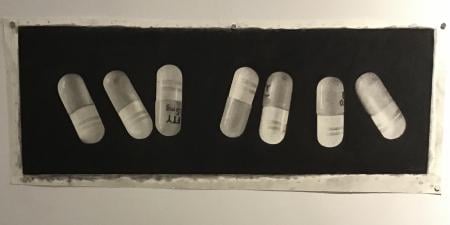How many people throughout history suffered from my disease and others like it but
went untreated? This question is made more pressing by the knowledge that even
though the disease was discovered in 2007, some doctors I spoke to believe that
it’s been around at least as long as humanity has.
Susannah Cahalan1
According to the 2010 Americans with Disabilities Census Report, only about 6% of people who reported disabilities use visible supports (eg, a wheelchair or cane).2,3 Many living with disabilities are living with invisible illnesses,2 with no bruise or rash or other empirically verifiable or measurable symptoms or indications: chronic fatigue syndrome, anti-N-methyl-D-aspartate encephalitis, fibromyalgia, multiple sclerosis, postconcussive syndrome, endometriosis, many mental illnesses, and many experiences of gender identity pluralism.4,2 A patient can appear healthy, enduring others’ glares for parking in a spot reserved for people with disabilities. Her joint pain and fatigue might be dismissed by her physician as normal hormonal changes, so she endures these symptoms alone for years until finally diagnosed with lupus.
Seeing is believing is a prominent orientation to patient care, so patients with hard-to-recognize symptoms frequently receive insufficient, inequitable support.2,5 Lack of empathy from clinicians can leave patients feeling misunderstood, isolated, and that they must bear the burdens of their disease without help.5 Some clinicians express frustration with patients with illnesses of presently invisible etiology—blaming them, resenting symptoms without the privilege of certain expression, accusing them of being dishonest or “difficult,” pathologizing them as malingering or psychosomatic, or labeling them in ways that are dismissive of their deep knowledge and understanding of their own bodies and lived experiences.5 Such dismissals are common6 and highlight the irony of seeing is believing resulting in clinicians’ ignorance of patients’ reports, which impedes their efforts to help their patients. When patients’ narratives count for too little and empirically verifiable “knowns” count for too much, progress stalls, distrust grows, and no one feels better.5,6
An arc of discovery from unknown-unknowns to known-unknowns to known-knowns7 is possible when key beliefs are revised over time, such that unknowns can be transformed into knowns through curiosity and humility. So, too, what’s invisible can become visible, unidentifiable phenomena can be rendered identifiable, and what’s untreatable can be treated. This issue of the AMA Journal of Ethics illuminates ethical, social, and cultural questions to help guide such discoveries, to strengthen medicine’s tolerance of tension between art and science, and to pursue healing in a way that might be hardest to practice: listening could be a threshold to relieving suffering.
References
-
Cahalan S. Brain on Fire: My Month of Madness. Penguin Books; 2012.
-
Solomon A. What happens when you’re disabled but nobody can tell. New York Times. July 10, 2020. Accessed March 10, 2021. www.nytimes.com/2020/07/10/style/invisible-disabilities.html?smid=tw-nytimesscience
-
Brault MW. Americans with disabilities: 2010. US Census Bureau; July 2012. Accessed May 13, 2021. https://www2.census.gov/library/publications/2012/demo/p70-131.pdf
- Kundrat AL, Nussbaum JF. The impact of invisible illness on identity and contextual age across the life span. Health Commun. 2003;15(3):331-347.
- Homma M, Ishikawa H, Kiuchi T. Association of physicians’ illness perception of fibromyalgia with frustration and resistance to accepting patients: a cross-sectional study. Clin Rheumatol. 2016;35(4):1019-1027.
-
Charon R, Wyer P; NEBM Working Group. Narrative evidence based medicine. Lancet. 2008;371(9609):296-297.
- Connors MM, McGrath JW. The known, unknown and unknowable in AIDS research in anthropology. Anthropol News. 1997;38(3):1-4.



